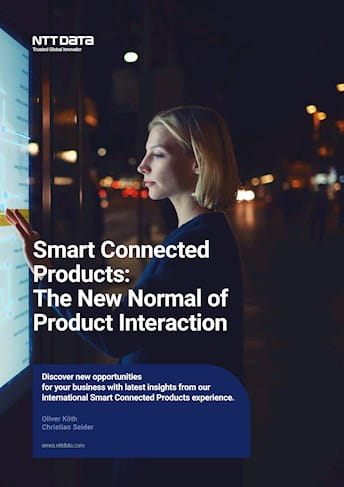Smart Connected Products
The advancement of digital technologies like cloud, internet of things and artificial intelligence has in the past years led to the integration of connectivity, software functions, and data collected in a wide range of electro-mechanical products, from small consumer devices to large manufacturing machines - turning them into so-called Smart Connected Products.
The white paper takes a closer look at the emergence of Smart Connected Products, which has led to a reference architecture in their supporting ecosystems.
The first part of this white paper concludes by introducing a maturity model to help companies benchmark their capabilities. The second part focuses on the business implications of Smart Connected Products, and it introduces key components of business models, which are illustrated by successful examples in the market.
Finally, the white paper summarises the business perspective by discussing 10 strategic decisions originally identified by [Porter et al.]. and outlines NTT DATA human-centric viewpoint design sprint approach specifically focused on Smart Connected Products.
Introduction
The role of Smart Connected Products in the IT landscape
Smart Connected Products are the missing link from the customer back into the enterprise. Over the years, organizations ’internal IT systems were increasingly aligned towards the customer with CRM systems being implemented and web-sites and portals being established. However, the feedback loop back from the customer using the product was often not available or could only be guessed from service requests and verbal feedback via sales and field service teams.
With Smart Connected Products the customer using the product can be closely observed and the value of the product for the customer can be increased over time by relevant product enhancements. In doing so, vendors can evolve their transactional relationships with clients towards a continuous stream of delivered value.
Definition of Smart Connected Products
Smart Connected Products (Smart Products) are products, equipment and other things that are typically electro-mechanical systems often provided with processors, sensors, software and connectivity that enable data exchange between the product and its environment, the manufacturer, the operator/ user and other products and systems.
Connectivity also enables some of the product’s capabilities to be present outside the physical device, in what is often known as the product cloud. The data collected by these products can then be analyzed to support decision making, enable operational efficiencies and continuously improve the performance of the product.
The impact of Smart Products
When taking a closer look at the impact that Smart Products have on business, we first see the benefits in operational efficiency:
- Enhanced functionality, e.g. by delivering new product features through software updates.
- Improved maintenance, e.g. by failure prediction and remote maintenance.
- Optimised lifecycle, e.g. by using product data from the field to optimise the design of newer generations of the product.
- Direct feedback from the customer, e.g. learn about who the customer uses the product and manage the customer lifecycle accordingly.
However, the impact of Smart Products reaches beyond improved operational efficiency and can help a company redefine its strategic positioning in the market by leveraging cross- and up-sell potentials...
Download the Whitepaper to read the full story

WhitePaper - 12 min read
Smart Connected Products
The New Normal of Product Interaction
Download the Whitepaper